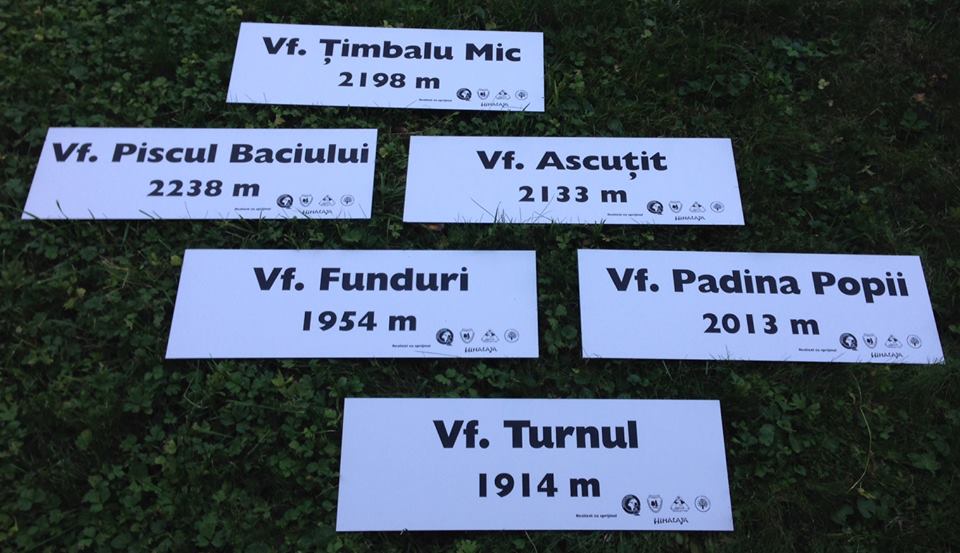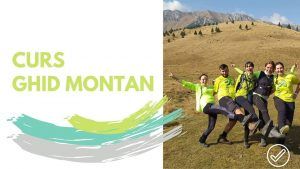It is good or not to have mark trails
There are lots of contradictory opinions on whether it’s better to mark trails or to let them be wild and explored just by experts.
The foundation of tourist signaling started at the same time with the first mountain associations around 1800. Since than, the trails have been marked and re-marked rising to a total of 1000 km of marked trails – a great distance in comparison to mountains from other countries.
We believe that signaling marks have a definite function on the mountain trails and that a well-functioning tourism is based on adequate marked trails. The important thing for those who have initiatives for marking/re-marking mountain trails is to observe certain legal norms (Source: Mountain Rescue Services – Salvamont Prahova). We like marked trails and for this reason, next year, we initiate a re-marking project in the Romanian Carpathians.
Legal norms to be observed by the signaling marks:
- a) they will be framed by an imaginary quadrangle with sides of 16 – 20 cm;
- b) colour stripes will have 6 cm width and the white ones, 5 cm width (5 + 6 + 5 = 16 cm);
- c) the triangle with coloured center will have 10 cm sides and the white stripe will have 3 cm width (3 + 10 + 3 = 16 cm);
- d) the colour dot/point will have 10 cm diameter and the white stripe will have 3 cm width (3 + 10 + 3 = 16 cm);
- e) the colour cross will have 3 cm length perpendicular stripes and the white stripe will have 5 cm width (5 + 6 + 5 = 16 cm);
- f) the signaling marks must be applied on both ways of traffic, at distances so that they are visible from one sign to another, perpendicular on the walking direction and at a 1.5 – 2 m height from the ground.
- g) in the alpine areas and large openings, the signaling marks will be on metal poles. The poles will be first painted with protection primer, than with black and white paint in alternative stripes having 30 cm width. At the bottom, the poles will have a fixation system for the cement base in the ground. At the top, the poles will have a metal rectangle for the signaling marks;
- h) for trees protection, the signaling marks will be directly painted on the trees, as nailing fixation of marks is forbidden;
- i) on rocky areas, with difficult access, signaling marks will be on short metal rectangles or on flat stone slabs integrated in a cemented pile of rocks having 0,4 – 0,6 m height;
- j) in the areas where the mountain trail is well signaled and it has no parting, there is no need of extra marks, but the forest entrances (from roads, alpine openings, valleys) must be specially marked by one ore more visible signal marks.
- k) in a point common to several trails, marked with different signs, there will be displayed all the signaling marks, grouped and not alternatively at great distances of one another. In the rocky areas, the signaling marks will be horizontally grouped.
- l) the points of directional change of the trail are marked with two-colored arrows of 40-50 cm length, 8-10 cm width and directional angle of 15°, 30°, 45°, 60°, 75°, 90°, 105° and 120°;
- m) in busy areas and exposed to fog formation, the sign that indicates the nearest alpine shelter or hut will be accompanied by an acoustic and visual notification system which is electrically or mechanically operated. In huts’ case, the well-functioning of this system is the hut keeper’s responsibility.
- n) at the signaling marks production, you must use reflecting pollution and weatherproof paints;
- m) to be avoided marking public or forest roads otherwise than by signposts at each end. In case that a mountain trail crosses a public road, the trail should me marked so that the entrance and the exit of the public road is obvious.





Nu există comentarii